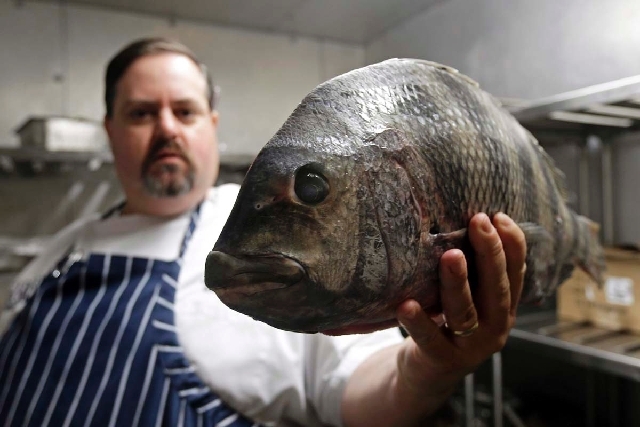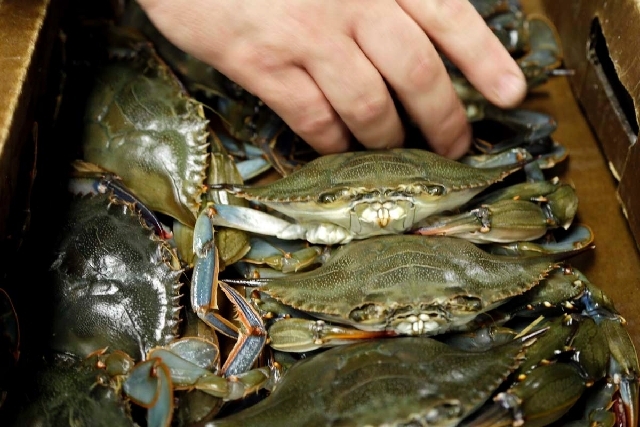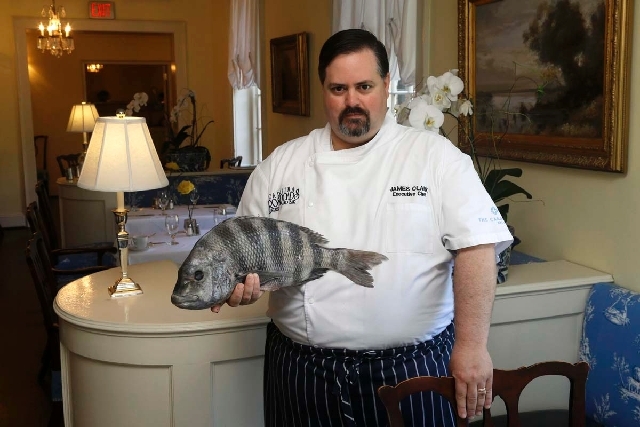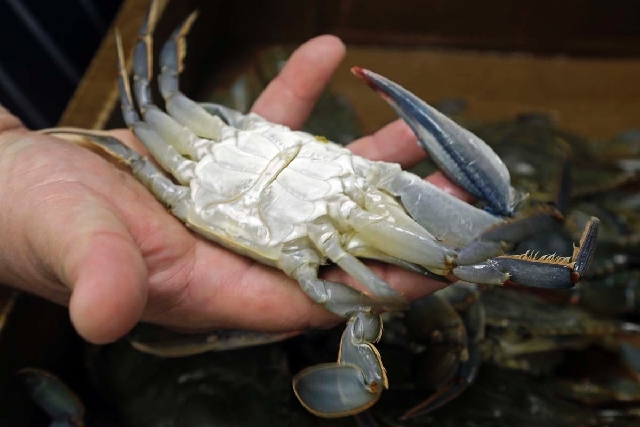Dishing up trash: New look for sustainable seafood
Most people have only ever seen a scorpion fish in an aquarium. Unless they dine at Carolina Crossroads Restaurant in Chapel Hill, N.C., where they’ll find the spiny, venomous creature on the menu.
It’s called trash fish dining, and it’s catching on with chefs around the country searching for fresh ways to fill their menus with sustainable — and delicious — seafood.
“The fishermen would be like, ‘This is all trash, junk,’ but I said, ‘I’ll pay fair price for it if you’ll bring it back to the dock,’” says James Clark, the restaurant’s executive chef. “Eat some butter-poached scorpion fish and you’ll swear it’s lobster.”
Chefs such as Clark go beyond the usual recommendation to eat small, lower-food-chain fish like sardines, and instead delve full force into little-known local catches that many anglers regard as nuisance or “trash” fish. Clark’s menu also offers triggerfish, drum, white grunt and other obscure species.
Meanwhile, New Haven, Conn., sushi restaurant Miya features invasive species such as shore crabs and moon snails. At San Francisco’s Incanto, chef Chris Cosentino serves sea slug, tuna spines and roasted fish heads. And at Arrows restaurant in Ogunquit, Maine, award-winning chefs Mark Gaier and Clark Frasier built a “Trash Fish Dinner” around whiting, mackerel and other less desirable species.
Besides introducing the public to lesser-known fish, these top chefs also are promoting a broader concept of how to eat sustainably from the ocean, a concept that conservation experts say could help secure the world’s seafood supply. Just three fish — shrimp, canned tuna and salmon — account for more than half of all U.S. seafood consumption, according to the trade association the National Fisheries Institute.
“We have created a system based on demand, rather than on what the oceans supply,” says Barton Seaver, a former chef who is now director of Harvard University’s Healthy and Sustainable Food Program. “We’re so busy trying to make salmon sustainable that we forget to ask what’s available.”
Better management of the world’s fisheries also is part of the equation. Two-thirds of the world’s wild fish come from the coastal waters of just nine countries and the European Union, says Andy Sharpless, author of “The Perfect Protein” and head of the ocean conservation organization Oceana.
These countries have the legal authority to manage the fisheries off their shores without the hassle of international agreements that govern the high seas and the fish that swim in them — the tuna and other large, popular species. The United States, Chile and the European Union already have viable plans to protect nurseries and manage catch limits, Sharpless says. Getting the remaining seven countries on board, he says, would double the world’s available seafood by 2050.
“The oceans can play a very big part in making sure people have healthy and good food to eat between now and 2050,” Sharpless says. “The goal of restoring those oceans to abundance is more achievable than people have generally understood.”
And consumers have been enthusiastic, chefs say. Sales of fish at Carolina Crossroads have increased 45 percent, Clark says. At Incanto, customers can’t get enough of Cosentino’s unusual offerings, including steaks of Humboldt squid, an often 85-pound creature that is 90 percent edible, and fish heads.
“If I had salmon heads on the menu they’d be gone every day,” he says. “People get it. They’re not afraid. It’s all about making people comfortable with what they’ve never had before.”
And about getting them to stop thinking of good food as garbage. Many chefs and conservationists say they appreciate the term “trash fish” for its sensationalism, which might grab people’s attention. But they bristle at the idea that healthy, abundant animals capable of feeding the world’s growing population — and keeping fishermen in business — would be thought of as disposable.
“There’s a long tradition of big famous chefs generating excitement around a new dish that people haven’t previously eaten, and having that become a high status thing,” Sharpless says. “One man’s trash fish another man’s new taste sensation.”
———
Michele Kayal is an editor at http://www.americanfoodroots.com . Follow her on Twitter (at)hyphenatedchef


























